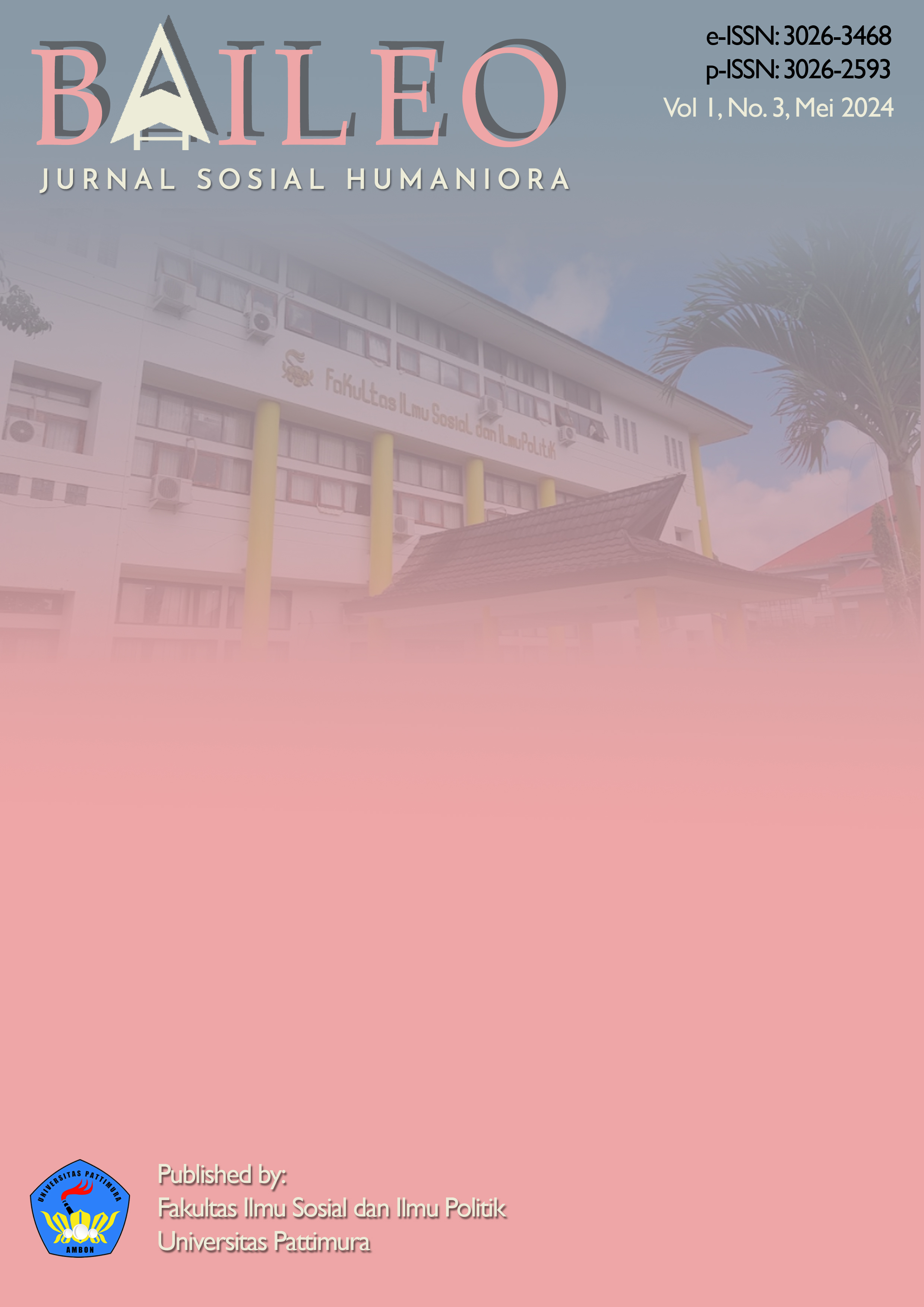Women’s Welfare, Stunting, and Access to Reproductive Rights: An Overview of the Situation in Indonesia
Abstract
This article explores the interconnection between women’s welfare, stunting, and access to reproductive rights in Indonesia, highlighting the often-overlooked role of women’s health and empowerment in combating child stunting. The study aims to analyze how structural barriers, gender inequality, and unmet reproductive health rights contribute to the persistence of stunting, particularly among children under five. Utilizing a literature review method, this research draws from scholarly databases and bibliometric analysis to examine relevant publications on stunting, women’s rights, gender, and reproductive health. The findings reveal that many healthcare services in Indonesia remain inadequate in fulfilling women’s reproductive rights, with limited access to essential services reflecting broader issues of gender injustice and state neglect. The novelty of this article lies in its integrated perspective that frames stunting not only as a child health issue but also as a gender and social equity concern. This study contributes to the social sciences and humanities by emphasizing the need for a holistic, long-term strategy that centers women as both rights holders and key agents in public health. It recommends policy reforms focused on reproductive justice, structural health equity, and the transformation of social norms to ensure that stunting prevention efforts are sustainable and gender-responsive.
Downloads
References
Akseer, N., Vaivada, T., Rothschild, O., Ho, K., & Bhutta, Z. A. (2020). Understanding multifactorial drivers of child stunting reduction in Exemplar countries: a mixed-methods approach. The American Journal of Clinical Nutrition, 112(Supplement_2), 792S-805S. https://doi.org/10.1093/ajcn/nqaa152
Alson, J. G., Robinson, W. R., Pittman, L., & Doll, K. M. (2021). Incorporating measures of structural racism into population studies of reproductive health in the United States: a narrative review. Health Equity, 5(1), 49–58. https://doi.org/10.1089/heq.2020.0081
Arifuddin, H., Arifuddin, H., Arifuddin, A., & Nur, A. F. (2023). The Risk Factors of Stunting Children Aged 0-5 Years in Indonesia: A Multilevel Analysis. Healthy Tadulako Journal (Jurnal Kesehatan Tadulako), 9(1), 109–120. https://doi.org/10.22487/htj.v9i1.1004
Arman, A., Muchlis, N., Nadira, N. S., Fachrin, S. A., Ahri, R. A., & Patimah, S. (2020). Integrasi Budaya Lokal dan Program Pelayanan Kesehatan dalam Penanganan Stunting di Wilayah Kerja Puskesmas Maiwa Kabupaten Enrekang. Jurnal Penelitian Kesehatan” SUARA FORIKES”(Journal of Health Research” Forikes Voice”), 12(1), 1–5.
Badan Pusat Statistik. (2022). Tujuan Pembangunan Berkelanjutan: Kesetaraan Gender.
Beal, T., Tumilowicz, A., Sutrisna, A., Izwardy, D., & Neufeld, L. M. (2018). A review of child stunting determinants in Indonesia. Maternal & Child Nutrition, 14(4). https://doi.org/10.1111/mcn.12617
Black, M. M., Pérez-Escamilla, R., & Fernandez Rao, S. (2015). Integrating Nutrition and Child Development Interventions: Scientific Basis, Evidence of Impact, and Implementation Considerations. Advances in Nutrition, 6(6), 852–859. https://doi.org/10.3945/an.115.010348
Blackburn, S. (2014). Women and the State in Modern Indonesia. Cambridge University Press.
BPS. (2023). Nikah dan Cerai Menurut Provinsi, 2022. In BPS. https://www.bps.go.id/indikator/indikator/view_data_pub/0000/api_pub/VHpUK3MrOVd6dTJjcHdoQ1Z6TGlmUT09/da_04/1
Brahima, J. J., Noor, N. N., & Jafar, N. (2020). Immunization and distance relationship status on the birth events 1000 HPK stunting work in bone health district Barebbo. Enfermería Clínica, 30, 318–322. https://doi.org/10.1016/j.enfcli.2019.10.091
Cook, R. J. (2020). International human rights and women’s reproductive health. Women, Medicine, Ethics and the Law, 37–50. https://doi.org/10.4324/9781003073789-3
Correa, S., & Petchesky, R. (2017). Reproductive and sexual rights: a feminist perspective. In Culture, society and sexuality (pp. 314–332). Routledge.
Dahlberg, M., & Thapar-Björkert, S. (2023). Conceptualizing xenophobia as structural violence in the lives of refugee women in Gauteng, South Africa. Ethnic and Racial Studies, 1–23. https://doi.org/10.1080/01419870.2023.2179890
Danaei, G., Andrews, K. G., Sudfeld, C. R., Fink, G., McCoy, D. C., Peet, E., Sania, A., Smith Fawzi, M. C., Ezzati, M., & Fawzi, W. W. (2016). Risk Factors for Childhood Stunting in 137 Developing Countries: A Comparative Risk Assessment Analysis at Global, Regional, and Country Levels. PLOS Medicine, 13(11), e1002164. https://doi.org/10.1371/journal.pmed.1002164
Duana, M., Siregar, S. M. F., Anwar, S., Musnadi, J., & Husna, A. (2022). Dampak Pernikahan Dini Pada Generasi Z Dalam Pencegahan Stunting. COMSEP: Jurnal Pengabdian Kepada Masyarakat, 3(2), 195–200. https://doi.org/10.54951/comsep.v3i2.292
Eyanoer, P. C., & Zaluchu, F. (2020). COVID-19 and the Fourth Burden of Women in Developing Countries: A Mini Review. Open Access Macedonian Journal of Medical Sciences, 8(T1), 476–479. https://doi.org/10.3889/oamjms.2020.5470
Frasetya, S. A., Nuraini, V., Sari, D. A. P., & Mahardika, I. K. (2023). Mengatasi Stunting dalam Pertumbuhan dan Perkembangan Balita. Jurnal Pendidikan Tambusai, 7(3), 27397–27401.
Ganle, J. K., Baatiema, L., Quansah, R., & Danso-Appiah, A. (2020). Barriers facing persons with disability in accessing sexual and reproductive health services in sub-Saharan Africa: A systematic review. PloS One, 15(10), e0238585. https://doi.org/10.1371/journal.pone.0238585
Hafid, F., Ansar, A., Nasrul, N., Ramadhan, K., & Ardiansyah, A. (2023). Prevalence and Determinants Stunting Among Children Under Two Years in Indonesian District. Poltekita: Jurnal Ilmu Kesehatan, 16(4), 553–563. https://doi.org/10.33860/jik.v16i4.2246
Handayani, N. S., Huriyati, E., & Hasanbasri, M. (2023). Association of Maternal Education With Nutritional Outcomes of Poor Children With Stunting in Indonesia. Asia Pacific Journal of Public Health, 35(5), 373–380. https://doi.org/10.1177/10105395231185980
Huriah, T., & Nurjannah, N. (2020). Risk factors of stunting in developing countries: A scoping review. Open Access Macedonian Journal of Medical Sciences, 8(F), 155–160. https://doi.org/10.3889/oamjms.2020.4466
Kementrian Kesehatan RI. (2022). Survei Status Gizi 2021.
Knight, A., & Miller, J. (2021). Prenatal genetic screening, epistemic justice, and reproductive autonomy. Hypatia, 36(1), 1–21. https://doi.org/10.1017/hyp.2020.50
Kramsch, C. (2020). Language as symbolic power. Cambridge University Press. https://doi.org/10.1017/9781108869386
Lens, J. W. (2020). Miscarriage, stillbirth, & reproductive justice. Wash. UL Rev., 98, 1059.
Lindberg, R., McKenzie, H., Haines, B., & McKay, F. H. (2023). An investigation of structural violence in the lived experience of food insecurity. Critical Public Health, 33(2), 185–196. https://doi.org/10.1080/09581596.2021.2019680
Maharani, T., & Galih, B. (2021, September 28). Sepanjang 2004-2021, Komnas Perempuan Catat 544.452 Kekerasan dalam Rumah Tangga. Kompas.Com, 1. https://nasional.kompas.com/read/2021/09/28/10181941/sepanjang-2004-2021-komnas-perempuan-catat-544452-kekerasan-dalam-rumah?page=all#google_vignette
Marmot, M., & Allen, J. J. (2014). Social Determinants of Health Equity. American Journal of Public Health, 104(S4), S517–S519. https://doi.org/10.2105/AJPH.2014.302200
Mulyani, S. (2021). Isu Kesetaraan Gender dalam Pencegahan dan Penanganan Stunting. Jurnal Pusdiklat Kesos, 9(17), 1–15.
Palutturi, S., Syam, A., & Asnawi, A. (2020). Stunting in a political context: A systematic review. Enfermería Clínica, 30, 95–98. https://doi.org/10.1016/j.enfcli.2019.10.049
Parker, W. J. (2020). The moral imperative of reproductive rights, health, and justice. Best Practice & Research Clinical Obstetrics & Gynaecology, 62, 3–10. https://doi.org/10.1016/j.bpobgyn.2019.07.006
Perempuan, K. (2020). Kekerasan meningkat: Kebijakan penghapusan kekerasan seksual untuk membangun ruang aman bagi perempuan dan anak perempuan. Catahu: Catatan Tahunan Tentang Kekerasan Terhadap Perempuan, 1–109.
Perempuan, K. (2021). Perempuan dalam himpitan pandemi: Lonjakan kekerasan seksual, kekerasan siber, perkawinan anak, dan keterbatasan penanganan ditengah covid-19. Catatan Tahunan.
Prendergast, A. J., & Humphrey, J. H. (2014). The stunting syndrome in developing countries. Paediatrics and International Child Health, 34(4), 250–265. https://doi.org/10.1179/2046905514Y.0000000158
Putri, I. M., & Rosida, L. (2023). Upaya Pencegahan Stunting melalui Sosialisasi Program Pendewasaan Usia Perkawinan dan Anemia Remaja. Masyarakat Berdaya Dan Inovasi, 4(1), 80–87.
Safitri, D., Arif, F., Handayani, F., Juwita, M., Efendi, R., & Sabila, S. (2022). Stunting dan Pencegahannya di Desa Pulau Balai, Kecamatan Pulau Banyak, Aceh Singkil. Jurnal Ilmiah Universitas Batanghari Jambi, 22(3), 1726–1731. https://doi.org/10.33087/jiubj.v22i3.2788
Sari, G. M. (2021). Early Stunting Detection Education as an Effort to Increase Mother’s Knowledge about Stunting Prevention. Folia Medica Indonesiana, 57(1), 70–75. https://doi.org/10.20473/fmi.v57i1.23388
Strasser, J., & Schenk, E. (2023). Prescribing authority for pharmacists is integral to protecting reproductive health and rights. Health Affairs Forefront.
UNICEF East Asia dan Pasific Region. (2021). Southeast Asia Regional Report on Maternal Nutrition and Complementary Feeding.
Usman, A. N., Syarif, S., Hadju, V., As’ad, S., & Baso, Y. S. (2021). Use of technology for monitoring the development of nutritional status 1000 hpk in stunting prevention in Indonesia. Gaceta Sanitaria, 35, S231–S234. https://doi.org/10.1016/j.gaceta.2021.10.028
Wang, Y. (2021). ‘Passionate aesthetics’: TP gender practices and discourses, and the hierarchies within lesbian (lala) communities in contemporary mainland China. Journal of Gender Studies, 30(5), 561–572. https://doi.org/10.1080/09589236.2021.1929094
Wendt, A. S., Sparling, T. M., Waid, J. L., Mueller, A. A., & Gabrysch, S. (2019). Food and Agricultural Approaches to Reducing Malnutrition (FAARM): protocol for a cluster-randomised controlled trial to evaluate the impact of a Homestead Food Production programme on undernutrition in rural Bangladesh. BMJ Open, 9(7), e031037. https://doi.org/10.1136/bmjopen-2019-031037
Wieringa, S. E. (2020). Heteronormativity and passionate aesthetics. The SAGE Handbook of Global Sexualities, 291. https://doi.org/10.4135/9781529714364.n14
Zaluchu, F. (2022). Redeeming Gender Imbalances: How Biblical Interpretation Can Affect Women’s Health in Indonesia. Christian Journal for Global Health, 9(2), 11–22. https://doi.org/10.15566/cjgh.v9i2.651
Zaluchu, F., Wieringa, S., & Kok, B. De. (2017). Maternal Deaths: Do Women still have the Right to Life? A Case Study in Nias Island. Jurnal Perempuan, 22(2), 93. https://doi.org/10.34309/jp.v22i2.175
Copyright (c) 2024 Simona Christina Henderika Litaay

This work is licensed under a Creative Commons Attribution 4.0 International License.




